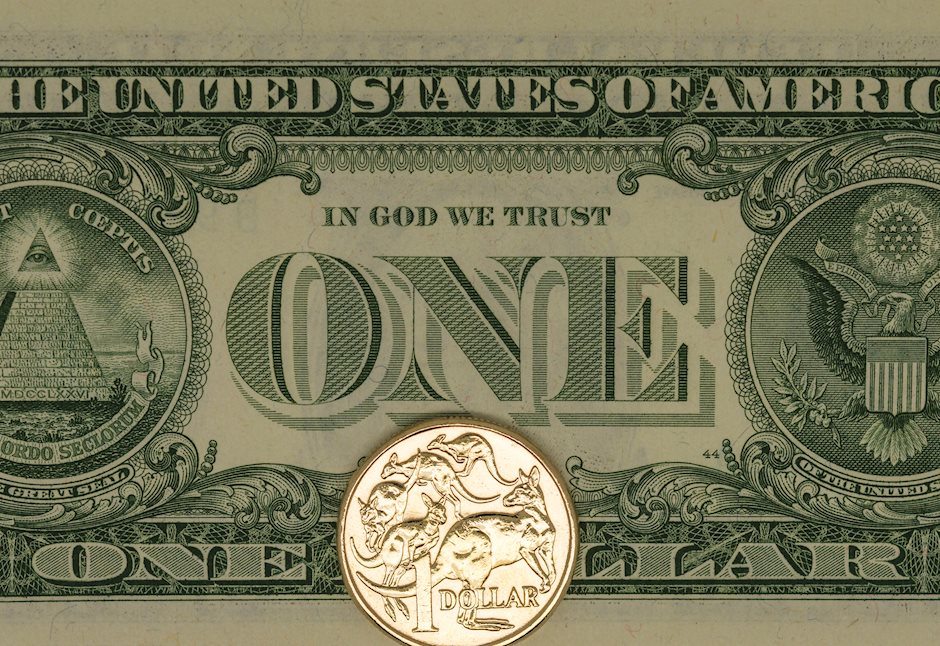AUD/USD holds above 0.6800 despite stronger US Dollar, eyes on RBA Minutes
- AUD/USD trades in positive territory around 0.6805 in Monday’s early Asian session.
- The US Nonfarm Payrolls came in stronger than expectations in September.
- Middle East geopolitical risks might weigh on the Aussie, but a hawkish RBA could cap its downside.

The AUD/USD pair recovers some lost ground to near 0.6805, snapping the two-day losing streak during the early Asian session on Monday. The stronger-than-expected US September employment data provide some support to Greenbank and drag the major pair lower.
Data released by the Labor Department on Friday showed that the US Nonfarm Payrolls (NFP) rose by 254,000 in September from a revised 159,000 in August and was better than the 140,000 forecast. Meanwhile, the Unemployment Rate fell to 4.1% in September from 4.2% in the previous month.
The upbeat US economic data has eased concerns about the weakness in the labor market and prompted traders to reduce bets that the US Federal Reserve (Fed) will cut the deeper interest rate, which provides some support to the US Dollar (USD). The markets are now pricing in nearly 97.4% chance of 25 basis points (bps) Fed rate cuts in November, up from 31.1% before the NFP data.
The Australian Dollar (AUD) remains under selling pressure amid geopolitical tensions in the Middle East, which hurt the risk appetite for the AUD. However, the downside of the pair might be limited due to the hawkish stance of the Reserve Bank of Australia (RBA). Looking ahead, traders will take more cues from the RBA Meeting Minutes, which will be released on Tuesday.
(This story was corrected on October 7 at 6:00 GMT to say in the article that the markets are now pricing in nearly 97.4% chance of 25 basis points (bps) in November, not 50 bps.)
Australian Dollar FAQs
One of the most significant factors for the Australian Dollar (AUD) is the level of interest rates set by the Reserve Bank of Australia (RBA). Because Australia is a resource-rich country another key driver is the price of its biggest export, Iron Ore. The health of the Chinese economy, its largest trading partner, is a factor, as well as inflation in Australia, its growth rate and Trade Balance. Market sentiment – whether investors are taking on more risky assets (risk-on) or seeking safe-havens (risk-off) – is also a factor, with risk-on positive for AUD.
The Reserve Bank of Australia (RBA) influences the Australian Dollar (AUD) by setting the level of interest rates that Australian banks can lend to each other. This influences the level of interest rates in the economy as a whole. The main goal of the RBA is to maintain a stable inflation rate of 2-3% by adjusting interest rates up or down. Relatively high interest rates compared to other major central banks support the AUD, and the opposite for relatively low. The RBA can also use quantitative easing and tightening to influence credit conditions, with the former AUD-negative and the latter AUD-positive.
China is Australia’s largest trading partner so the health of the Chinese economy is a major influence on the value of the Australian Dollar (AUD). When the Chinese economy is doing well it purchases more raw materials, goods and services from Australia, lifting demand for the AUD, and pushing up its value. The opposite is the case when the Chinese economy is not growing as fast as expected. Positive or negative surprises in Chinese growth data, therefore, often have a direct impact on the Australian Dollar and its pairs.
Iron Ore is Australia’s largest export, accounting for $118 billion a year according to data from 2021, with China as its primary destination. The price of Iron Ore, therefore, can be a driver of the Australian Dollar. Generally, if the price of Iron Ore rises, AUD also goes up, as aggregate demand for the currency increases. The opposite is the case if the price of Iron Ore falls. Higher Iron Ore prices also tend to result in a greater likelihood of a positive Trade Balance for Australia, which is also positive of the AUD.
The Trade Balance, which is the difference between what a country earns from its exports versus what it pays for its imports, is another factor that can influence the value of the Australian Dollar. If Australia produces highly sought after exports, then its currency will gain in value purely from the surplus demand created from foreign buyers seeking to purchase its exports versus what it spends to purchase imports. Therefore, a positive net Trade Balance strengthens the AUD, with the opposite effect if the Trade Balance is negative.
Author

Lallalit Srijandorn
FXStreet
Lallalit Srijandorn is a Parisian at heart. She has lived in France since 2019 and now becomes a digital entrepreneur based in Paris and Bangkok.

















